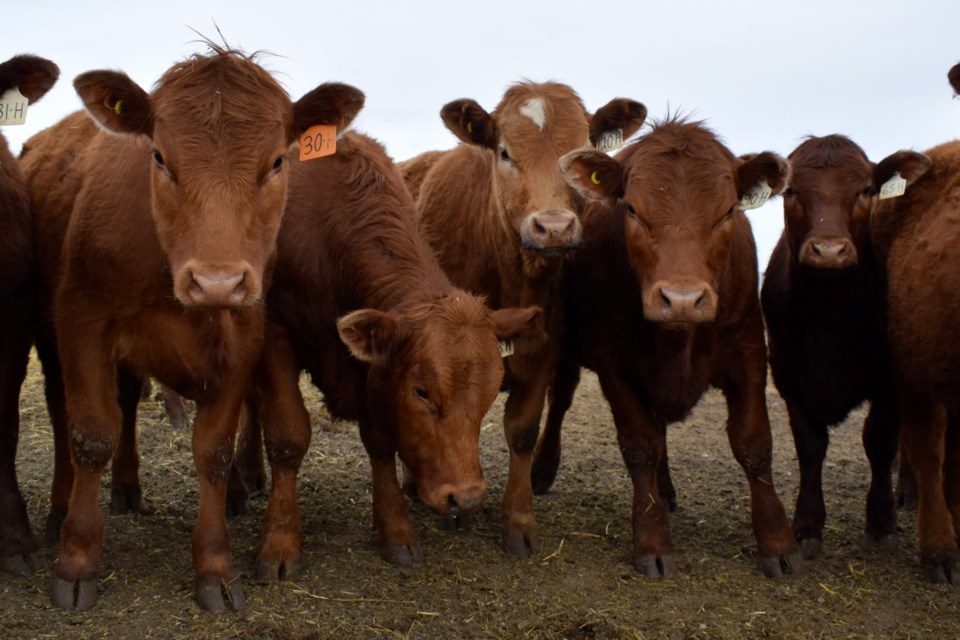University of Alberta researchers are leading a project to reduce methane emissions from beef cattle through genetic selection, potentially giving beef producers a new tool to minimize their environmental impact and earn additional revenue.
The five-year project is the first large-scale effort in Canada to measure methane emissions from beef cattle, allowing producers to identify and breed animals that naturally emit lower levels of methane. Methane is a potent greenhouse gas, with a warming effect more than 25 times greater than carbon dioxide over a century, making reductions in methane critical for environmental sustainability.
Led by John Basarab, an associate professor of livestock genetics in the Faculty of Agricultural, Life & Environmental Sciences, the project also explores creating a carbon offset protocol. If approved by government agencies, this protocol could offer beef producers financial returns for reducing methane emissions through genetic selection.
“Removing those kinds of existing barriers can help the Canadian beef industry stay resilient and, along with that, help ease environmental impact,” Basarab said.
The project includes more than 2,300 beef cattle, including animals from the , which is situated in Alberta. Using an emissions monitoring system, researchers measure methane released when cattle consume specially designed treat pellets. They’re also partnering with European researchers to test near-infrared spectroscopy (NIRS) on manure samples. NIRS is a technology used in labs to analyze compounds, and it has been applied to dairy cattle milk before. This is the first time it’s 小蓝视频 used in Canada on beef cattle fecal samples to develop molecular breeding values for methane emissions.
According to Basarab, if NIRS proves effective, it could become a fast, affordable method for estimating methane emissions in large numbers of cattle. “To get a proper representation of methane emissions coming from just one animal takes at least 30 days, so to measure thousands of beef cattle would take a long time. Using NIRS, we could potentially get a value for those emissions in as little as a few days,” he said.
Data gathered from the feeding experiments and fecal analyses will enable researchers to calculate breeding values for lower methane emissions. These values would then be integrated into existing DNA-based multi-trait selection indexes, available to Canadian producers through , a research centre co-founded by the University of Alberta, Alberta Agriculture, and Agriculture and Agri-Food Canada.
“We’d be able to offer the producer a way to select for an animal that balances all of these qualities,” Basarab explained. The Livestock Gentec indexes already include traits like growth rate, feed efficiency, carcass quality, and female fertility.
The project also addresses barriers that limit genetic selection on commercial farms. Fewer than 20 per cent of Canada’s commercial cow-calf producers currently use genomics, largely because of the high cost of genotyping, which can reach $52 per head. Another barrier is that producers rarely see clear financial rewards from feedlots or packers for using genetic selection.
“The industry is segmented into different groups that don’t seamlessly share data back and forth, so producers often don’t know why their cattle get a certain price,” Basarab noted.
To address this, the research team is working with , an environmental consulting firm, to create a carbon offset protocol specific to cow-calf producers. Carbon offsets allow producers who lower greenhouse gas emissions to sell their carbon credits to large final emitters, such as utility companies, creating an incentive for emission reductions.
“Used to quantify greenhouse gas emission reductions, an offset protocol means producers with lower-GHG cattle could register and sell their carbon credits to large final emitters, such as utility companies,” Basarab said. “That puts money in the producer’s pocket directly, and can help them make a profit.”
An advisory committee of industry experts is assisting with the development of management practices for genetic selection, which will be piloted on 50 commercial beef farms across Canada. Producers taking part in the pilot will be interviewed to understand obstacles they may face and to identify strategies that could help increase the adoption of genetic selection.
“They can give us advice on how the technology can be practical for their industry, so the adoption of it is more likely,” Basarab added.
Although Canada’s beef industry has already implemented practices to reduce greenhouse gas emissions – such as managing grazing to sequester carbon in grasslands – Basarab sees genetic selection as a powerful new approach for enhancing sustainability.
“Our work will help the beef industry become more resilient and profitable, and it helps agriculture last for future generations,” he said.
©
The commentaries offered on 小蓝视频 are intended to provide thought-provoking material for our readers. The opinions expressed are those of the authors. Contributors' articles or letters do not necessarily reflect the opinion of any 小蓝视频 staff.




